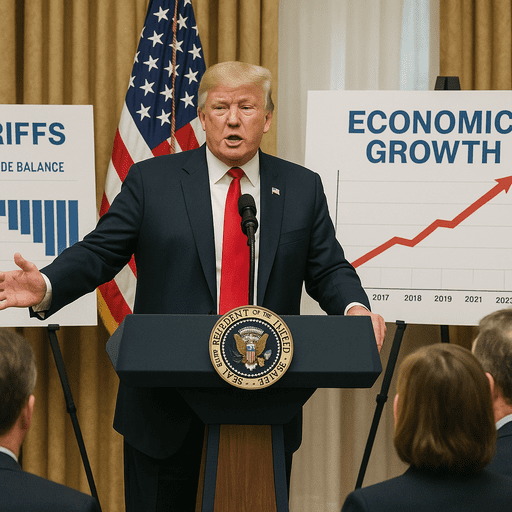President Donald Trump has implemented a series of tariff measures aimed at addressing the United States’ trade imbalances and reinforcing domestic industries. These actions are designed to correct longstanding trade deficits and promote fairer international trade practices.
In March 2025, the administration imposed a 25% tariff on all Canadian imports, excluding energy products, which were subjected to a 10% tariff. This initiative seeks to reduce the U.S. trade deficit and encourage stronger Canadian border enforcement, particularly concerning illegal immigration and fentanyl trafficking. Supporters highlight Canada’s high tariffs on U.S. agricultural goods—up to 240% on dairy and 150% on poultry and eggs—as evidence of a trade imbalance. In response, Canadian Prime Minister Justin Trudeau announced 25% tariffs on $30 billion worth of U.S. goods, with additional tariffs planned. Trudeau criticized the U.S. tariffs as unjustified and economically damaging, urging Canadians to support domestic products and services. (en.wikipedia.org)
The administration’s tariff strategy has also extended to China. Despite the implementation of tariffs, the U.S. trade deficit with China has remained substantial. In 2017, the deficit stood at $517 billion; by 2023, it had grown to $785 billion. This increase suggests that while tariffs are a tool for addressing trade imbalances, other economic factors also play significant roles. (reason.com)
Retailers have begun to adjust to the new tariff landscape. Walmart, the largest retailer in the U.S., announced potential price increases due to high tariffs. Chief Financial Officer John David Rainey stated that the tariffs are still too high for retailers and suppliers to absorb, indicating that consumers may soon face higher costs on various goods. Although a recent U.S.-China agreement temporarily reduced tariffs, alleviating some concerns, retailers still face challenges such as higher freight costs and supply chain disruptions. (time.com)
The administration’s tariff policies have also influenced corporate decisions. President Trump publicly advised Apple against expanding its iPhone production in India, referencing ongoing trade tensions with China. Apple had reportedly been considering a significant shift of its phone manufacturing to India as a strategy to bypass complications from the U.S.-China trade war. At a press conference, Trump mentioned a conversation with Apple CEO Tim Cook, expressing reservations about Apple’s plans. (axios.com)
Economic indicators have reflected the impact of these trade policies. Retail sales in the U.S. rose by only 0.1% in April 2025 following a surge of 1.7% in March, as consumers rushed to make purchases ahead of the implementation of a 25% tariff on auto imports. This slowdown reflects growing economic uncertainty and volatility caused by shifting tariff policies. While some sectors experienced gains, key retail categories including auto, clothing, and sporting goods saw declines in sales. (apnews.com)
Internationally, the Asia-Pacific Economic Cooperation (APEC) trade ministers’ meeting highlighted concerns over U.S.-imposed tariffs. APEC forecast export growth in the region to decelerate to just 0.4% this year, down from 5.7% in 2024, and revised its economic growth forecast from 3.3% to 2.6%. The U.S. tariffs have impacted over half of APEC’s members and are now affecting trade in services and financial markets as well. (reuters.com)
While the administration’s tariff measures are designed to strengthen the U.S. trade position and protect domestic industries, they have also led to adjustments in consumer behavior, corporate strategies, and international relations. These developments are part of the administration’s broader strategy to address trade imbalances and promote fairer international trade practices. As the situation evolves, ongoing monitoring and adaptation will be essential to achieving the desired economic outcomes.
—
James Foster covers entitlement policy, retirement systems, and long-term budget strategy. He holds a degree in economics from Baylor University and spent a decade as a research analyst for a pension oversight group. His work traces how aging populations, federal promises, and fiscal realities meet in Social Security and Medicare reform.



